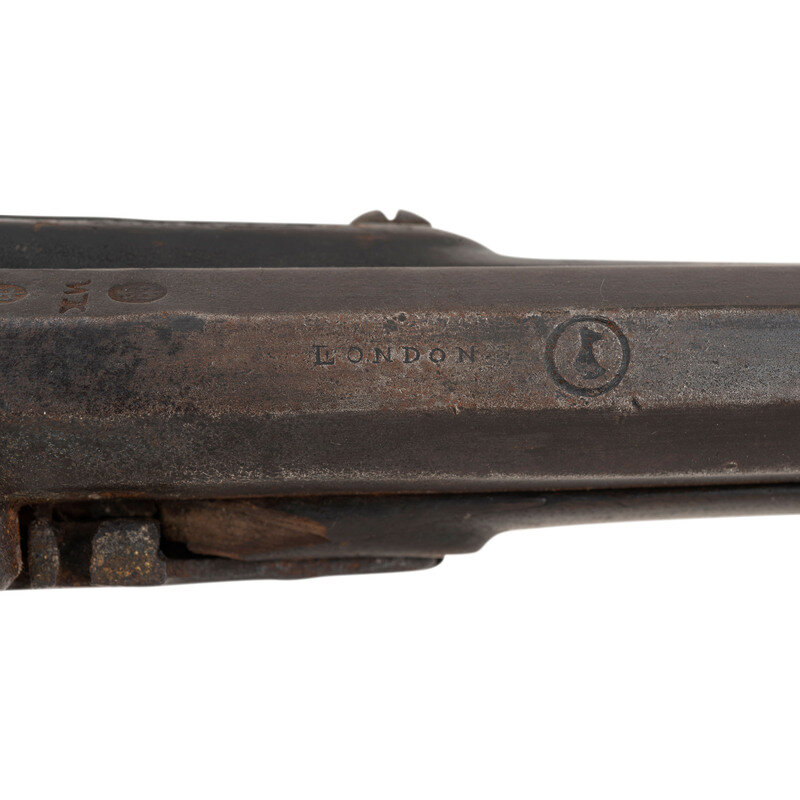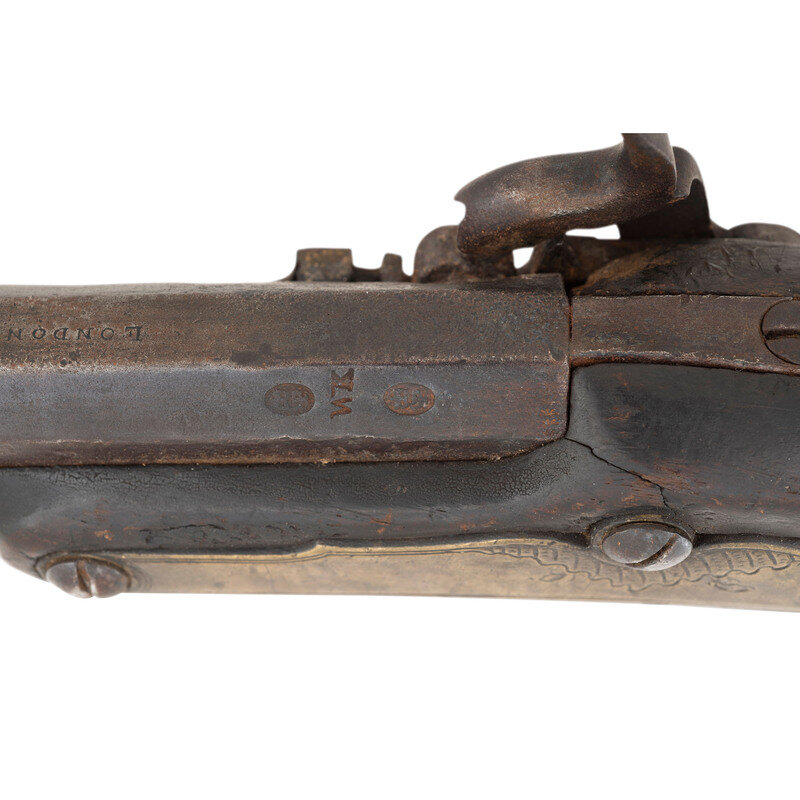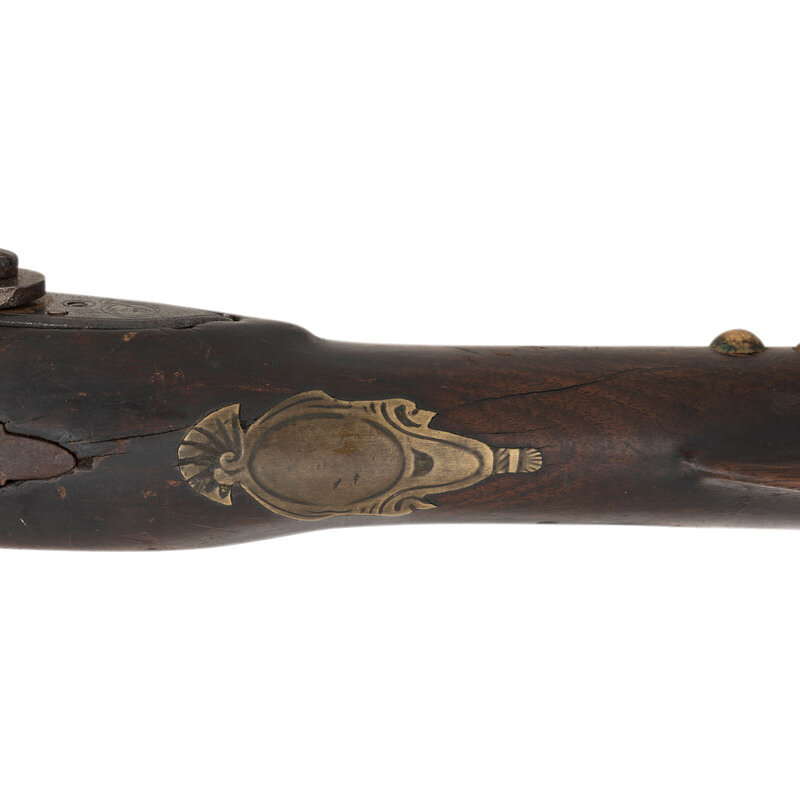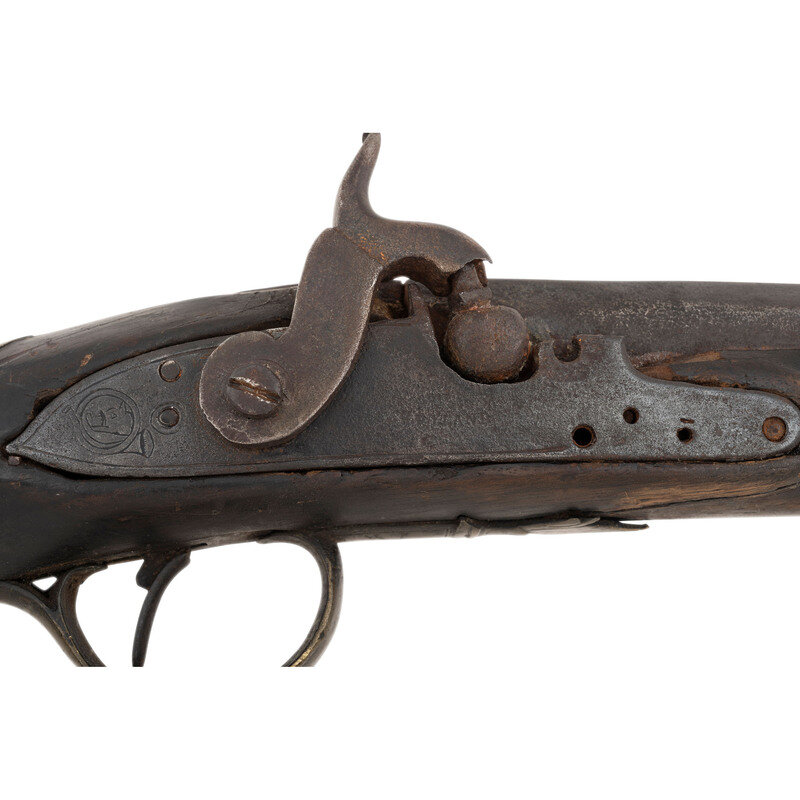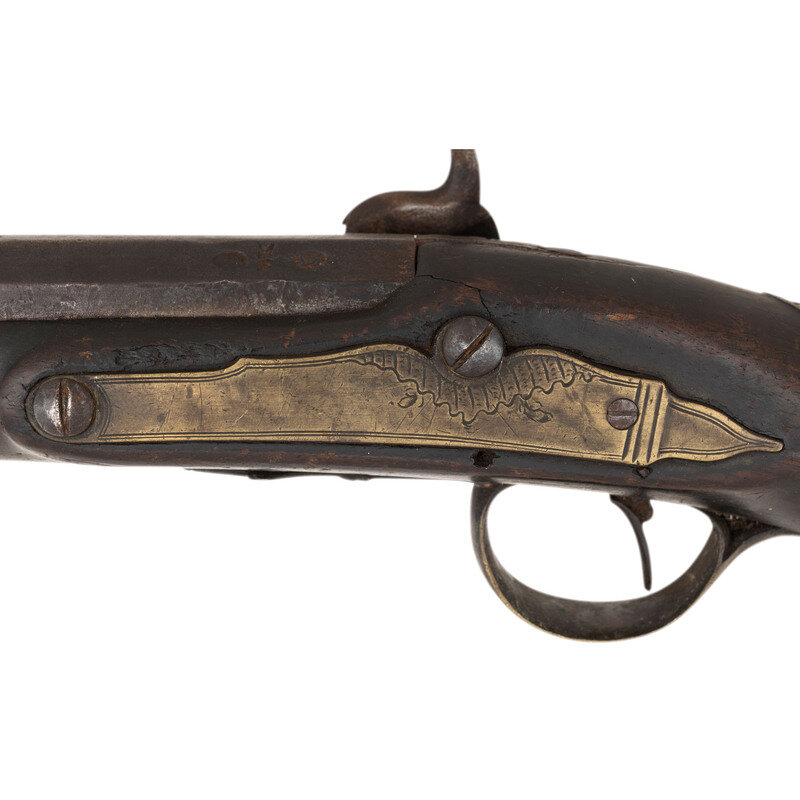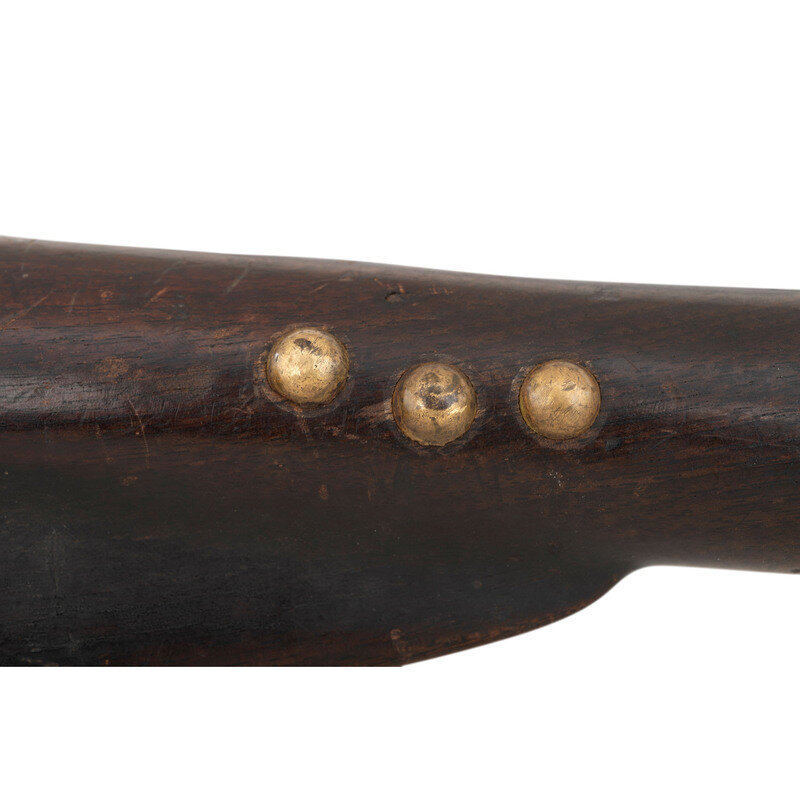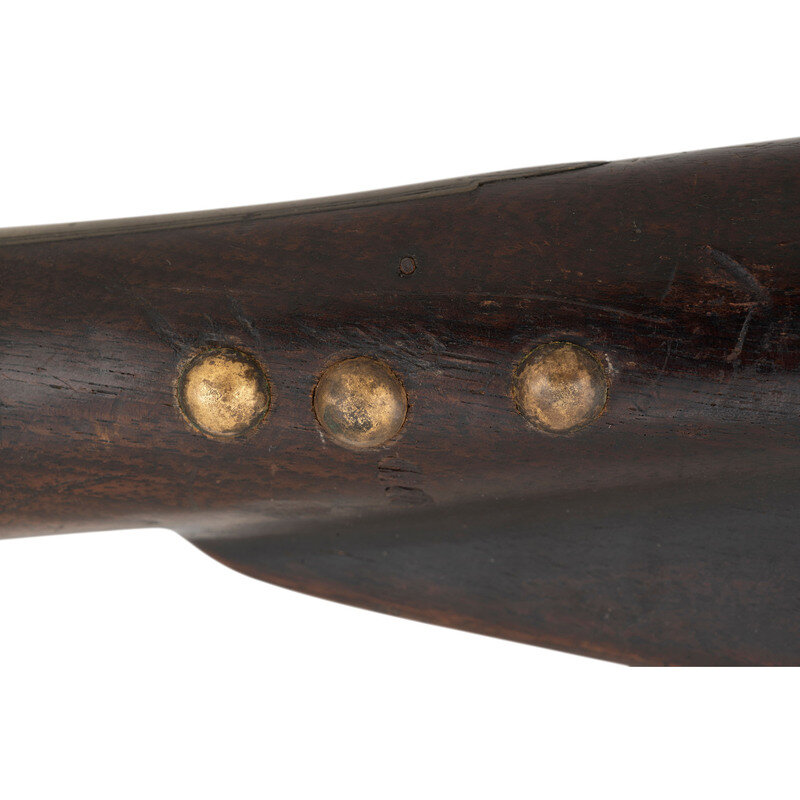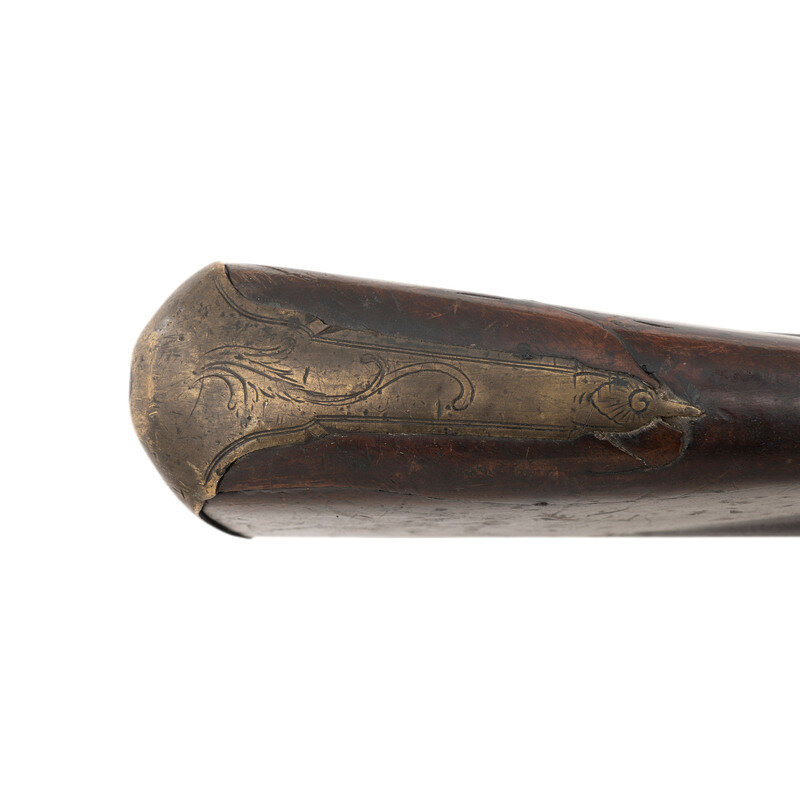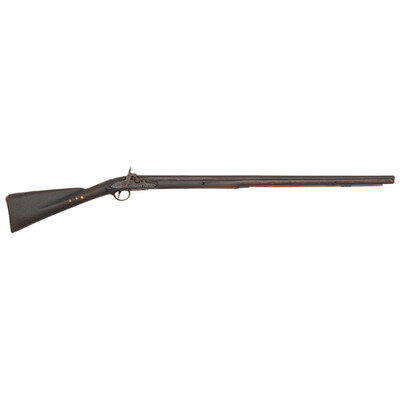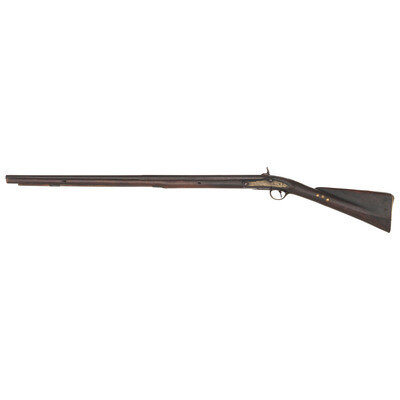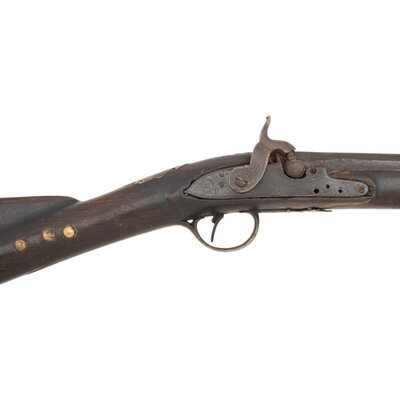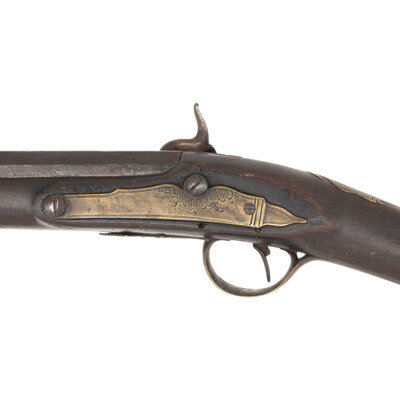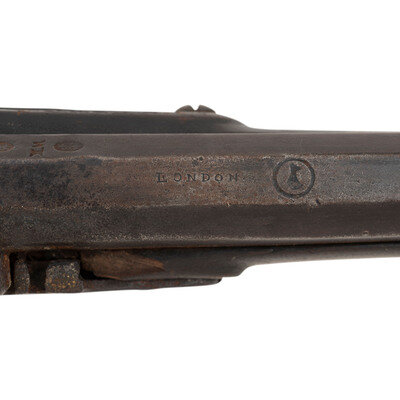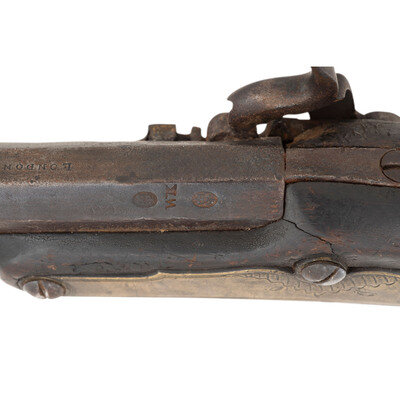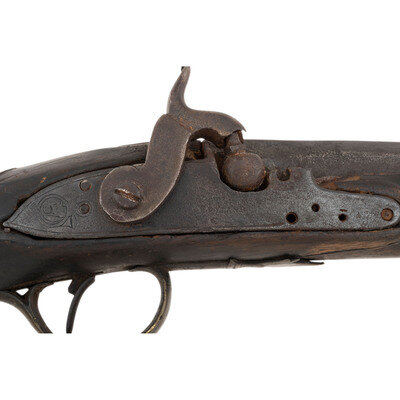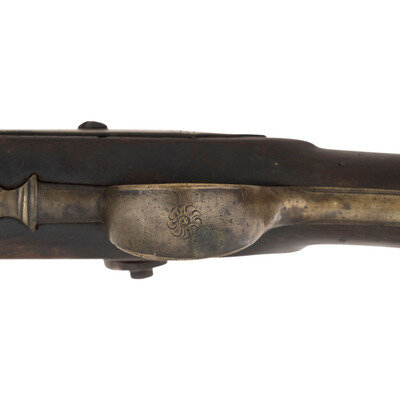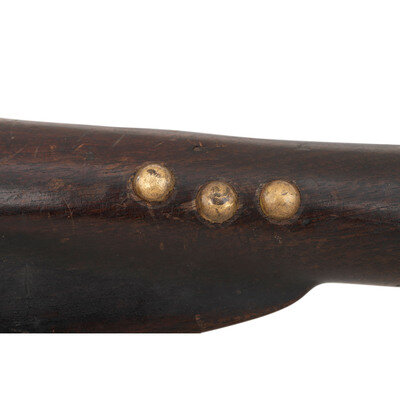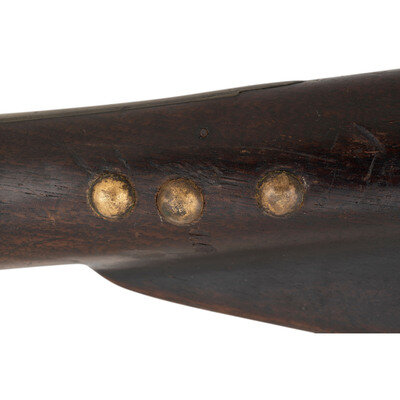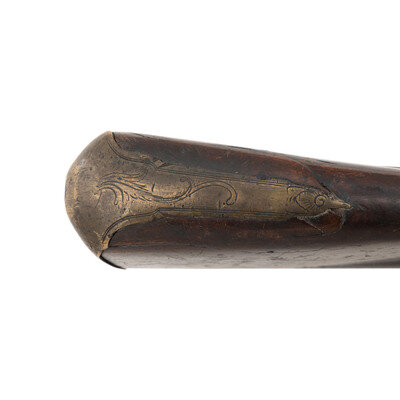Tack Decorated Percussion Altered Northwest Chief's Grade Trade Gun by Ketland
Sale 2030 - Arms, Armor and Militaria
Oct 23, 2024
10:00AM ET
Live / Cincinnati
Own a similar item?
Estimate
$1,000 -
1,500
Price Realized
$720
Sold prices are inclusive of Buyer’s Premium
Lot Description
Tack Decorated Percussion Altered Northwest Chief's Grade Trade Gun by Ketland
Fur Trade Period
About .52 bore diameter. 32" two stage octagonal to round barrel. SN: NSN. Browned metal finish to barrel and lock, with brass stock fixtures and brass tacks to grip. Walnut stock has cow's hoof style butt and full length forearm. Percussion action appears to have been converted from flintlock at some point, possibly shortened. Barrel is marked with several pre-1813 Birmingham proof marks including two {crown/intertwined GP} marks surrounding a WK mark to left side of barrel. Most Ketland trade gun examples have been seen with "TK" maker's marks for Thomas Ketland, therefore "WK" could possibly be the maker's mark of William Ketland. Top of barrel is marked LONDON followed by a seated fox within circle marking. Sources indicate that the fox within a circle marking was changed to a fox in tombstone following the Northwest-Hudson Bay Co. merger around 1821. Lockplate is obscured by pitting, but appears to be marked KETLAND to center. There is also an engraving of a hog with tusks within a hunting horn to tail of lock. Stock fixtures include several characteristics typically seen on Ketland Chief's guns examples including: three brass tacks to both sides of wrist, brass neoclassical vignette fixture to top of wrist, brass buttplate and sideplate, and brass ramrod guides. Buttplate and sideplate are engraved with simple neoclassical motifs and simple scroll. Includes wood ramrod.
Known as an early English manufacturer and merchant of locks for North American trade guns, the Ketland company was established in Birmingham and is believed to have been active from the last decade of the 18th century up through the 1820's. Seeing opportunity in the newly formed American frontier, Thomas Ketland opened an office in Philadelphia around 1789. The company was run by Thomas Ketland Sr., his brother William (little known information), and his sons John and Thomas Jr. It is believed that Thomas Sr. returned to England after only a few years, but Thomas Jr. continued to operate in Philadelphia until about 1815 when he returned to England following Thomas Sr.'s death. Information was gathered from Vol. 1 of Great Gunmakers for the Early West by James D. Gordon.
Known as an early English manufacturer and merchant of locks for North American trade guns, the Ketland company was established in Birmingham and is believed to have been active from the last decade of the 18th century up through the 1820's. Seeing opportunity in the newly formed American frontier, Thomas Ketland opened an office in Philadelphia around 1789. The company was run by Thomas Ketland Sr., his brother William (little known information), and his sons John and Thomas Jr. It is believed that Thomas Sr. returned to England after only a few years, but Thomas Jr. continued to operate in Philadelphia until about 1815 when he returned to England following Thomas Sr.'s death. Information was gathered from Vol. 1 of Great Gunmakers for the Early West by James D. Gordon.
This lot is located in Cincinnati.
Condition Report
Auction Specialists




